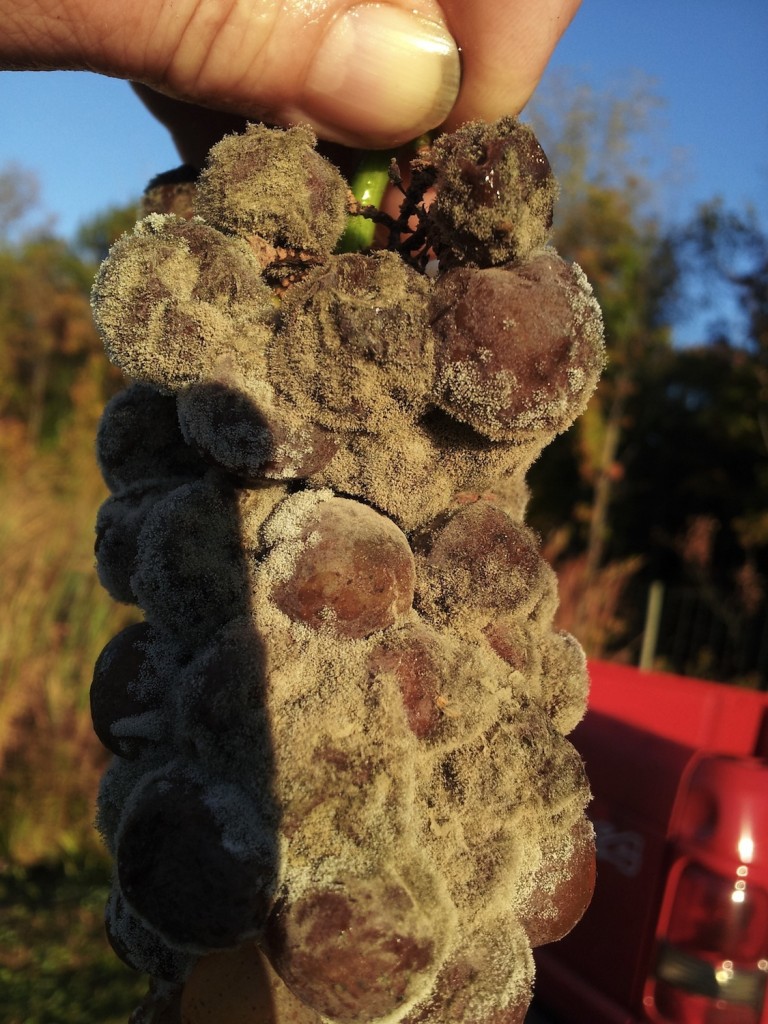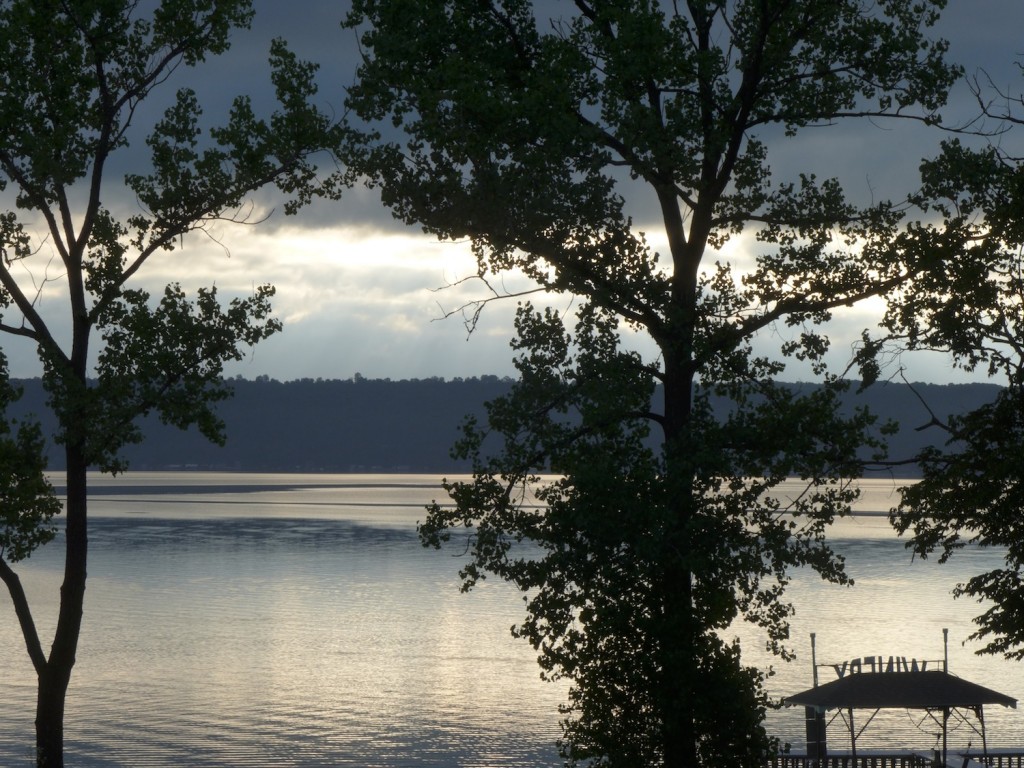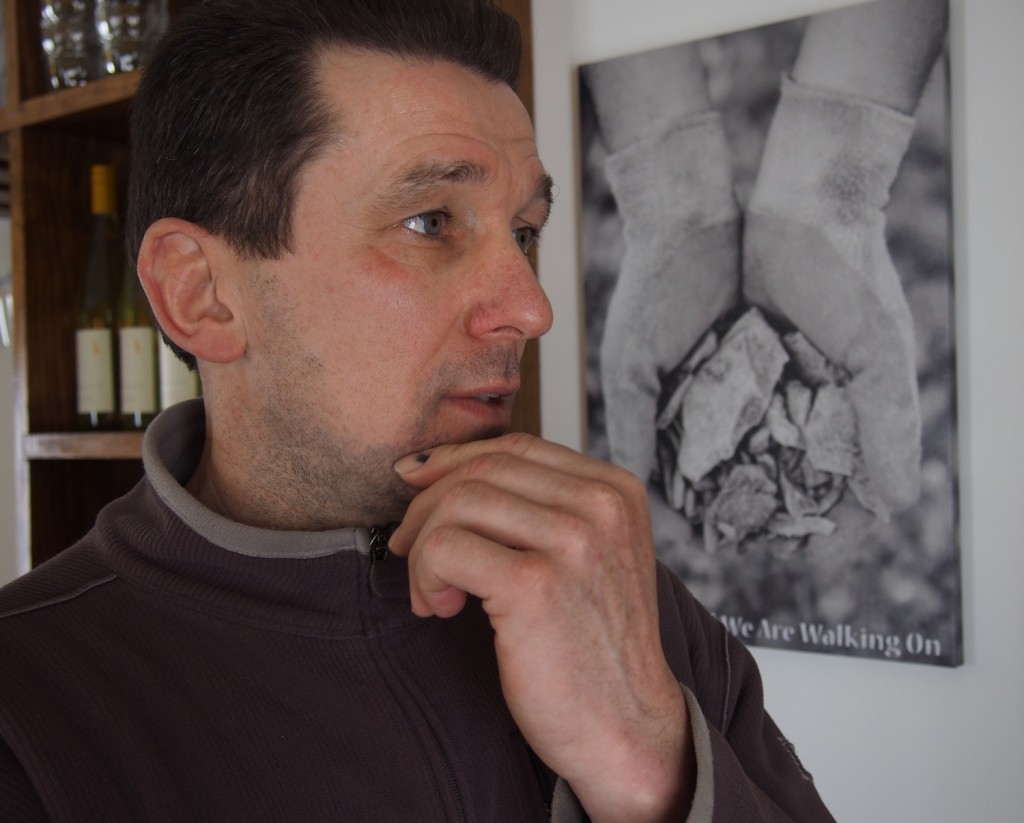After KISTLER MY ASS (scroll down to see my previous blog posting)
is this now the ROCKY HORROR RIESLING SHOW ???
No way! These are just some of the nobly-rotten grapes from which Red Tail Ridge winery in the Finger Lakes (FLX) in Upstate New York made their sensational 2013 Riesling ‘907’, one of the best sweet white wines produced anywhere in America. And a 500ml bottle of this nectar costs only $29.99 from the winery!
The combination of FLX, Riesling and sweet on the label used to be a recipe for disaster. The problem was that only the least good grapes were used for these wines, and due to poor vineyard management that often meant the dregs. Any Riesling grapes that were reasonably ripe and clean were used for dry and medium-dry wines. Back in the Bad Old Days sweetness was used by many FLX winemakers as a kind of all-purpose Band Aid that would, to some limited degree, mask green acid, the murky flavor of non-noble rot and a multitude of other minor sins. However, there’s no way to hide the lack of attractive ripe aromas in Riesling; that leaves a hole no amount of sweetness can ever fill. So those wines were at best boring, at worst crude and cloying. No thanks!
My recent trip to the FLX hammered home how much has changed for the better and raised an important question: Why did the upswing in the quality of FLX dry and medium-dry Rieslings during the last couple of years receive such wide media coverage, but the transformation of the sweet FLX Rieslings got only a tiny fraction of those column inches and web pages? Because “sweet” is still a major turn-off for the older generation of male consumers many of whom cling to the dry wine gospel as if it were a life-saver and they were drowning men.
Few people in the wine industry, except for Tyler Balliet, the creator the Wine Riot phenomenon (see www.secondglass.com for more info), have succeeded in actively reaching out to the Millenials; a generation with none of the old-fashioned hang-ups about sweetness in wine. The reason you didn’t already hear about the stunning new sweet Rieslings is that most wine and food journalists belong to that older generation and are fixated on Germany for that wine style. Sure, Germany makes some amazing sweet Rieslings, but this is far from being the whole story.
Logically, the FLX ought to be an ideal location for sweet Riesling, because most years the grapes can hang long into the fall without losing the acidity needed to give sweet wines the laser-like brightness that makes them shine like diamonds. The wine growing challenge is to prevent rot of the non-noble kinds from destroying them before those great aromas develop. Recent research in the FLX by Imelda Ryona & Gavin L. Sacks of Cornell University has shown that most of the exciting Riesling aromas develop late to very late in the growing season. The lakes supply the necessary moisture for noble rot to develop, but noble rot is only really noble when it strikes grapes that are already ripe or slightly over-ripe. For Riesling “long hang time,” isn’t just a buzzword!
Given dry conditions after noble rot (the fungus Botrytis cinerea) infects ripe or over-ripe grapes, the fungus punctures the skin of every berry hundreds of times and water evaporates through those holes resulting in the berry shriveling, thus concentrating the aromas and flavors. Simultaneously enzymes released by the growing fungus transform hundreds of substances in the grape. In total, a “magical” transformation occurs and it worlds wonders with the Riesling grape. Even a little bit of this process makes elegant and moderately sweet “Spätlese-type” possible, and once the majority of the berries in each bunch have shriveled significantly the lusher and more honeyed “Auslese-type” are on the cards if the winemaker understands how to properly handle stuff looking like the first picture. (I use the German terminology for lack of anything better).
On my recent trip to the FLX I tasted some great Spätlese-type sweet Rieslings at Boundary Breaks (’11 and ‘14), Kemmeter (‘12) Red Newt (‘13 and ’14), and in the Auslese-type category Bellangelo (’14) Bloomer Creek (‘13), Kemmeter (’13) and Red Tail Ridge (’13), and this is not a complete list! Johannes Reinhardt of Kemmeter, pictured above, is the rising star in this field, although the first vintage for his new winery was 2012. Look for his spectacular 2013 ‘SanSan’, when it is released.
The one name missing from this list is Hermann J. Wiemer, but Fred Merwarth and Oskar Bynke are the masters of this style. Their Spätlese-type and Auslese-type Late Harvest Rieslings have been stunning since I first visited the winery back in fall 2004. Their 2013 and ’14 wines of these styles (from $24.50 per bottle at the winery) are spectacular and remain the benchmark for all other FLX winemakers. Clearly, Fred and Oskar, pictured below in their new combo tasting room and press-house, have now become a source of inspiration for many of their colleagues. Thankfully, none of those named above are trying to carbon-copy the Wiemer style, rather each is reaching out in their own direction. That, no less than the special climatic conditions, is what gives the new wines their originality.
Last, but not least, there remains some confusion about the role for these wines on the dining table. My experience is that even the lusher Auslese-type wines are rarely sweet enough to accompany dessert. However, with blue cheeses both the Spätlese-type and Auslese-type wines are spectacular, and if you put some blue cheese in your hamburger that would be a great combo too. The Spätlese-type Rieslings are also great with shrimp and vegetable tempura, or even fish and chips. And those are just the no-brainers!
For much more about sweet Riesling consult my BEST WHITE WINE ON EARTH – The Riesling Story (pub. Stewart, Tabori & Chang, NYC, 2014).





![120114_riesling_global_RZ [1600x1200]](http://www.stuartpigott.de/wp-content/uploads/2015/03/120114_riesling_global_RZ-1600x12005.jpg)
Pingback: Weekly New York Wine News — March 16, 2015 | New York Cork Report | New York Wine